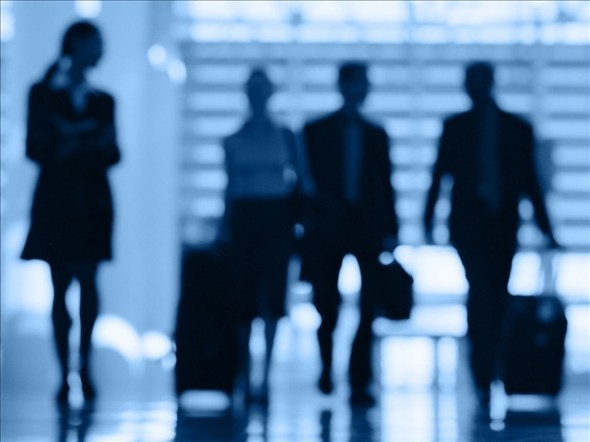
While it is not unexpected for holiday travel to be fraught with crowds, lines, delays and rushes, what would travel be like if airports were that chaotic all year?
The U.S. Travel Association released new data just before the Thanksgiving holiday that paints a bleak picture for travel over the next five years – especially if that travel involves U.S. airports.
Findings that update U.S. Travel’s 2013 “Thanksgiving in the Skies” study put major U.S. airports in even more dire conditions than previously thought, owing to the steady increase in travel demand coupled with continued chronic underinvestment in infrastructure.
Thanksgiving-like congestion will regularly plague airports much sooner — decades sooner, in the case of some of the busiest and most vital hubs in the nation.
The studies, conducted in conjunction with the research firm Cambridge Systematics, Inc. focused on the top 30 U.S. airports, which accounted for more than 70 percent of all the passenger enplanements in 2013.
Some of the discouraging findings:
- In 2013, six of the 30 largest U.S. airports were already experiencing congestion levels equal to the Wednesday before Thanksgiving one day per the average week. This year, the number of airports already at that congestion level has more than doubled (to 13).
- All 30 airports in the study will now experience Thanksgiving-like congestion one day per week within the next six years.
- Twenty airports will reach Thanksgiving congestion levels two days per week within five years.
- Twenty-six of the 30 airports will reach daily Thanksgiving-like passenger congestion sooner than expected.
- Newark Airport, Baltimore-Washington International Thurgood Marshall Airport and Honolulu International Airport will start to experience Thanksgiving-like traffic two days per week starting in 2015. Logan International Airport in Boston now gets there in 2016.
- Every day at Chicago Midway Airport and McCarran International in Las Vegas will feel like Thanksgiving beginning next year. For both facilities this will be happening about a decade sooner than previously forecast.

“If you hate traveling around Thanksgiving because of the crowds and chaos, unfortunately we’re well within sight of a time when it’s going to be like that every time you head to the airport,” said U.S. Travel Association President and CEO Roger Dow. “Political leaders need to understand the magnitude of this problem. It’s not just flyers that suffer because our air travel system cannot keep up with demand. It’s the entire U.S. economy.
“Now there is not a single U.S. airport ranked in the top 25 worldwide. Major investments in air travel infrastructure are desperately needed to restore service to even basic levels of adequacy, let alone cope with the expected coming demand.”
In the next 10 years, air travel is forecast to grow from 826 million to almost 950 million enplanements per year globally.
Separate research published by U.S. Travel earlier this year found that Americans are actively avoiding taking trips because of flying hassles. Air travel problems caused by poor infrastructure caused U.S. consumers to skip 38 million trips in 2013, costing the economy $35.7 billion.
That suppressed activity had a significant downstream effect on travel-related businesses and the overall economy, including spending losses of:
• $9.5 billion on airfare
• $5.8 billion on hotels
• $5.7 billion on recreation
• $3.4 billion on food services
• $2.8 billion on car rentals
For the question, “Which of the following are you most concerned about before taking a trip by air?” top responses from surveyed travelers were:
• Delays/cancellations (39 percent)
• Fees imposed by airlines for checked bags, seat assignments etc. (26 percent)
• Safety (11 percent)
• Security screening (8 percent)
• No concerns (6 percent)
Other notable results from that air passenger survey:
- About nine out of 10 travelers said that in the past year, air travel has become either more of a hassle or stayed about the same.
- 60 percent of air travelers say they would take an average of 2.6 more trips per year if air travel were made more efficient.
- 91 percent of travelers say the overall cost of flying is a “very important” or “somewhat important” factor in deciding whether or not to purchase an airline ticket.
- 92 percent support—and 68 percent “strongly support”—a proposed U.S. Department of Transportation rule that would require airline ticket sellers to display pricing with add-on fees included.
- 81 percent feel that the overall cost of air travel has either “somewhat” or “significantly” increased in the past year. 16 percent feel it is about the same, and only one percent think flying is cheaper.
Asked which factor is most responsible for recent spikes in the cost of air travel, 31 percent said airlines reducing the number of flights; 25 percent said airline-imposed add-on fees; and 23 named jet fuel prices. Surprisingly, more than half of passengers (52 percent) said they would be willing to pay slightly more to fly if the extra cost funded projects that reduce delays and cancellations and improve the overall passenger experience at airports.
Related Stories:
New Lift, New Look: LAX Prepares for its Close-up
Ebola Watched by Airports and Travel Agents

































































































































































































































































































Get Social